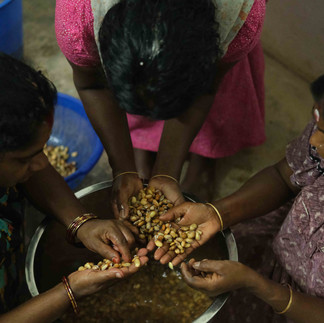Chakkupallam’s Paliya Ulsavam: Tradition, Adaptation, and Collective Faith
- Vysakh Seluraj
- Aug 21
- 3 min read

Paliya Ulsavam is an annual festival celebrated by the Paliyar community in Kerala during the harvest season, typically in April. Historically, the festival coincided with the community’s agricultural cycle, functioning as a ritual of gratitude to their deities for protection against harm and as a prayer for future prosperity. While the festival once took place in open community spaces, centred around a sacred tree with gatherings, feasts, and ritual dances, it has transitioned over time into temple-based worship. This shift reflects both cultural adaptation and the community’s effort to preserve collective identity while responding to external social and religious pressures.
The Emergence of the Badrakaliyamman Temple
At present, Paliya Ulsavam is closely associated with the Sree Badrakaliyamman Temple in Chakkupallam, constructed 13 years ago through the initiative of the Paliya community. The construction of this temple was a response to an incident in which the community faced discrimination when visiting another temple in the region. Before the establishment of this temple, ritual practices were performed at a site marked only by a trident and an anthill.
The temple’s construction marked a significant shift in ritual life. With a permanent space for worship, votive rituals were institutionalised into the festival calendar. Many of these practices, including forms of prayer and offerings, draw inspiration from Tamil Nadu’s temple traditions, underscoring the community’s strong cultural ties to Tamil heritage. Today, the temple has gained recognition beyond the community itself, attracting devotees from distant locations who participate in offerings during the annual festival.
WATCH NOW : Episode on Paliya Ulsavam at Chakkupallam
Festival Structure and Ritual Practices
Preparations
The festival begins with kodiyettam, the ritual hoisting of a flag at the temple, which marks the commencement of a week-long period of vows and restrictions. During this time, devotees wear kaapu, a turmeric bracelet tied to the hand with ritual care. The unbroken turmeric is believed to symbolise the integrity of the vow.
Alongside, preparation of mulapayaru is initiated. Seeds such as millet, corn, and peas are placed in a vessel to sprout and to be used later in the festival ritual. Women play a central role in this phase of the festival through kummi adi, a community dance performed every evening alongside devotional songs. This performance is directly tied to the efficacy of mulapayaru; mistakes in the dance are believed to negatively affect the growth of the sprouts and the fulfilment of associated vows.
Photos: Mulapayaru preparations being done for the Paliya Ulsavam
The Main Festival
After the preliminary week of vows, the main festival unfolds over three days. A variety of votive rituals and offerings take place, including maavilakku, amman vilakku, mulapayaru, theechatti, and kavadi. These rituals culminate in the ghoshayatra, a ceremonial procession on the final day, after which a concluding temple ritual is performed.
Mulappayaru & Karakam: Millet and other seeds are sprouted in a specially arranged supporting structure using clay pots, supported by coir, wood, or steel frames, and decorated in symbolic arrangements. Devotees observe strict vows during the sprouting period, and the health of the sprouts is interpreted as an indicator of divine favour. Sprouts that wither or fail are understood as consequences of lapses in ritual observance, requiring the devotee to renew their vows and offerings in the following year.
Maavilakku: This offering consists of a lamp placed on a pot, covered with a paste made of flour. Devotees must maintain ritual purity during the vow period; any disruption is believed to manifest during the ritual, such as the lamp failing to remain lit or the pot becoming difficult to carry.
Amman Vilakku: Similar to maavilakku, but the pots prepared are kept with a framed image of the goddess and flower decorations in addition.
Theechatti: This is a votive ritual performed for protection against illnesses such as smallpox and measles. Special clay pots, often sourced from Tamil Nadu, are filled with ingredients such as camphor, neem leaves, and frankincense, and then ignited. Devotees carry these flaming pots as a demonstration of devotion and faith. Restrictions apply to this offering: families that have experienced a recent bereavement or are under social sanctions within the community are prohibited from participating. If these prohibitions are violated, it is believed that the flames will not ignite properly, requiring further ritual resolution.
Photos: Devotees performing various rituals during the festival
Concluding Rituals
The festival concludes with collective worship, kummi adi, and prayers at the temple. Following the ritual lowering of the flag (kodimaram), the mulapayaru sprouts are carried to a nearby pond and immersed there, symbolically returning them to nature and closing the cycle of ritual obligations.





























Comments